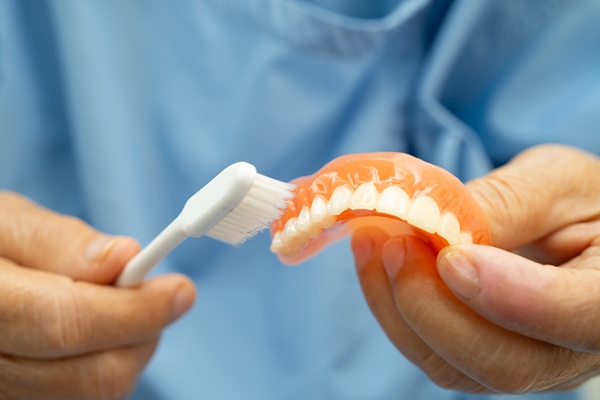How Does One Get Gum Disease?

Most people know about cavities, but what about gum disease? Both of these issues can affect your oral health, but people often overlook gum problems. There are varying levels of severity when it comes to this condition. Even minor bouts with it can cause pain and discomfort. If you do not treat it, you could suffer severe health effects. You should know how to identify the symptoms of this disease and what leads to it.
Clues that a person has gum disease
Like tooth decay, gum conditions can start out small. Over time, however, it is usually clear that there are oral health concerns. Diseased gums will usually bleed during brushing. Sometimes, the gums may bleed more frequently. The gums may also become inflamed and be tender to the touch. These are signs that the person has gingivitis, a milder form of the disease.
At more serious stages, periodontitis occurs. Symptoms may include receding gums and infections in the mouth. The infection can spread from there throughout the body. Cardiovascular problems can link to gum disease.
Not enough brushing
Occasional brushing (or never brushing at all) will likely lead to gum disease. Brushing with a soft-bristled brush and fluoride-based toothpaste removes food particles from the teeth and at the gumline. Doing this will prevent bacteria from building up and causing plaque and tartar. Brushing should occur at least twice a day. Inattention to these details will increase the individual’s chances of developing gingivitis and subsequently periodontitis.
Poor flossing habits
Flossing is just as important in the fight against gum disease. Flossing can dislodge particles of food from places that brushing may miss, such as in between hard-to-reach teeth. People of all ages should floss daily, preferably after eating or at the end of the day. Ignoring this habit will cause gums to swell and become tender. Bacteria will form and start to pull the gums away from the teeth.
Avoiding the dentist
Going to the dentist’s office may not be the most exciting thing, but it is vital. A semiannual dental checkup allows the dentist to clean the patient’s teeth and examine the individual for emerging problems. A patient may not recognize gum disease, but a dentist can spot this concern and start a treatment plan. People who rarely, if ever, go to the dentist may never get the professional care they need to combat this issue. Someone with gum problems may need to visit the dentist more often, as much as every two months.
Do your part to stay healthy
You do not want to contend with the effects of gum disease. The consequences could be severe for your oral health and oral wellness. Poor oral hygiene is a major culprit of this condition. If you stay on top of brushing and flossing, and if you visit the dentist, you can maintain healthy gums. Talk to your dentist today if you have concerns about how your gums look and feel.
Request an appointment here: https://www.annarborpersonaltouchdentistry.com or call Shiva G. Rad, D.D.S. at (734) 436-0817 for an appointment in our Ann Arbor office.
Check out what others are saying about our dental services on Yelp: Gum Disease in Ann Arbor, MI.
Recent Posts
Practicing preventive dentistry strategies can help you avoid serious dental problems. It can support your personal goals in keeping your gums and teeth healthy. Prevention is always better than going through treatments for serious dental problems. If you want to know how preventive dentistry can avoid the development of a serious oral problem, here are…
The goal of preventive dentistry is to keep teeth and gums clean and healthy in order to reduce the risk of cavities and other oral health concerns developing. It is a good idea to have a full understanding of how preventive dentistry can protect your smile and what services a dentist may recommend for cavity…
Understanding how Invisalign® works is the first thing you must do when considering this popular teeth straightening option. You will undergo an initial evaluation performed by a dental professional, who will then assign you a certain number of custom-made aligner sets, which need to be switched out every two weeks. After using the last set…
One of the challenges after replacing missing teeth is adjusting to new dentures. Although they improve your appearance and allow for better function, dentures can take some getting used to. The time it takes to adjust often depends on the amount of time you went without teeth and the type of dentures you have.Whether you…


